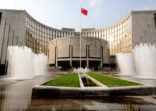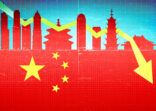Slipped out quietly at the tail-end of last week, the estimates for national output in 2014 put the US at $17.4trn versus a whopping $17.6trn from China. The UK? Well, we’re a bit behind at a more modest $2.4trn.
It was always a case of when, not if, China would become the foremost prominent economy in the world, but for it to happen this year is something of a surprise.
For some commentators, China is losing its way. While all other countries in the world are trying to boost growth, it needs slower-trend growth to guarantee the “soft landing” that most of us have taken for granted.
Widespread optimism
On the other hand, the US economy and its markets are booming; its long-term prospects helped greatly by shale production. Just last week the Fed’s Beige Book of anecdotal information reported widespread optimism driven in part by rises in employment and consumer spending.
In terms of markets, it is the S&P 500 that also appears to be more attractive to wealth managers. David Coombs, head of multi-asset investments at Rathbones, picks out the US as his favourite market, believing it will continue to benefit from a perpetual easing cycle in the form of sinking energy prices, declining rates and a strengthening dollar.
“On a forward-looking basis, the US is not very expensive, given our overall growth projections,” he says.
“In addition, the lower oil price remains a big positive for the US economy’s stalwart – the consumer. Over the next 18 months or so, we see a combination of geopolitical factors causing considerable fluctuations in the oil price, most of which will be to the downside. We especially like the technology and healthcare sectors, and domestic-facing industries.”
Something which could play against China’s economic and market prospects in the coming year is the potential of more civil unrest, with pro-democracy protests in Hong Kong having made headlines across the globe. If China really is to take a leading role it needs a solution before things get any worse; the Arab Spring showed how bad things can get when citizens take to the streets.
Coombs actually used the recent weakness around this uncertainty to invest in a dedicated China fund for the first time, ChinaAMC China Opportunities Fund. He also sees the introduction of the Shanghai-Hong Kong Connect programme, which went live in November, as a “nod to the outside world”
“Other more positive implications include the liberalisation of the renminbi and the potential extension of the program to other asset classes,” he adds.
“But they are no panacea for China’s underlying liquidity and corporate governance problems.”
Long term, another factor which could play apart in China’s further economic acceleration is the relaxation of its one-child policy which happened last year. China’s growing population has meant that its economy has benefited greatly over the past few decades from a ‘demographic dividend’. However, Andy Rothman, investment strategist at Matthews Asia, believes things have now changed.
The demographic dividend
“Economists have estimated anywhere between 15% to 25% of China’s economic growth in the past couple of decades was due to a favourable demographic profile – the demographic dividend – but that dividend has now become zero,” he says.
“In the coming years, China will experience a so-called negative demographic dividend, which will take its toll on China’s economic growth rate, assuming everything else stays the same.”
The US has its own struggles to contend with, of course – not least its budget deficit – but for the time being the stumbling blocks to market growth are less clear. China may be our new leader as far as the stats are concerned, but its glory days as an investment may have already past.
















